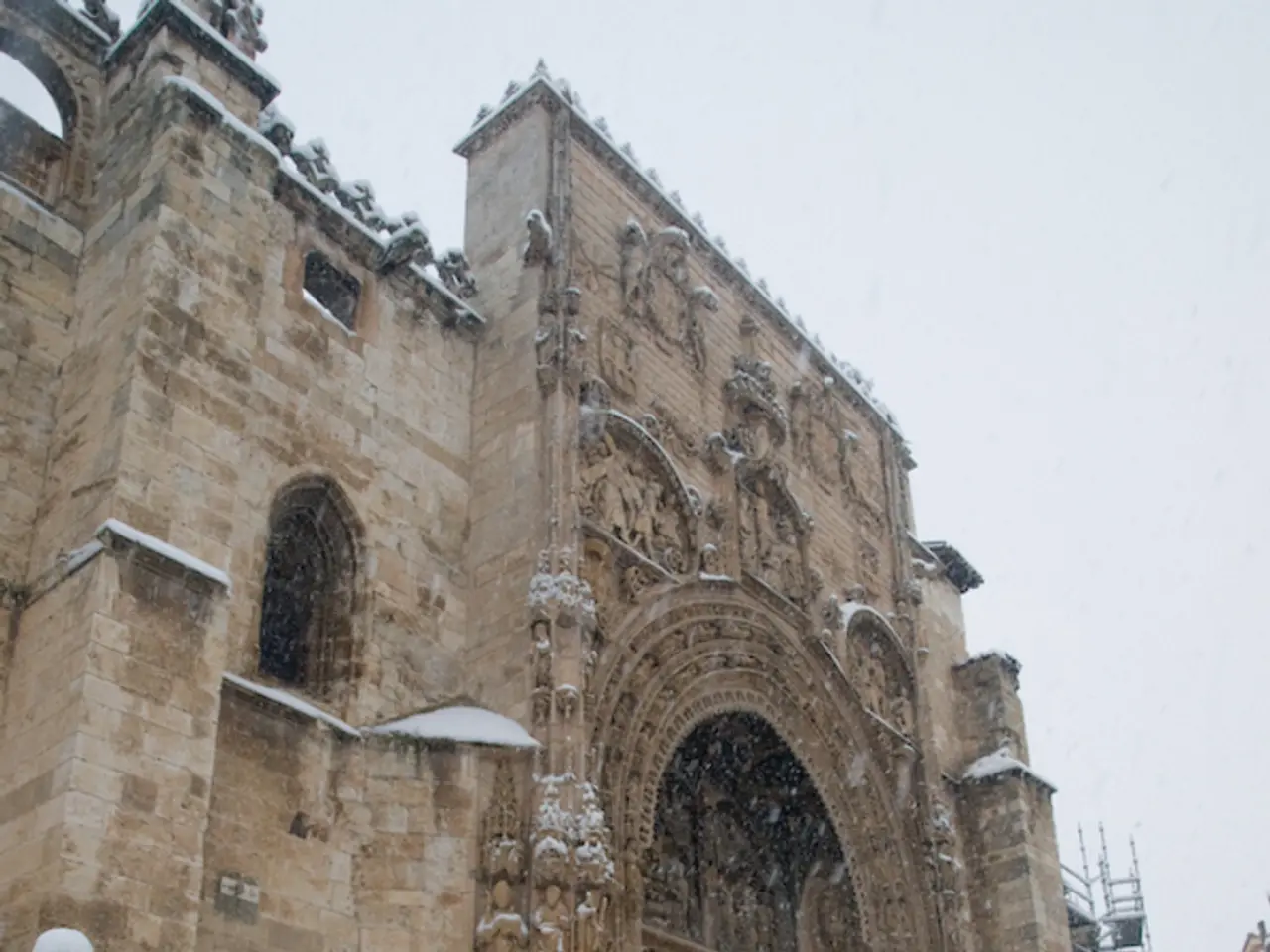Giant Patagonia glacier, spanning 18 miles, undergoing unprecedented ice melting
Perito Moreno Glacier Experiences Rapid Ice Loss
The Perito Moreno Glacier, a significant attraction in Argentina, is currently undergoing accelerated ice loss. This glacier, located in Patagonia and fed by the Southern Patagonian Ice Field, has been one of the most stable in the region since 2000, retreating less than 100 meters during that time [1][2]. However, since 2019, the glacier has shown a sharp increase in retreat rates and surface lowering, with some areas retreating nearly half a mile (about 800 meters) [1][2].
Researchers have attributed this sudden acceleration to the glacier losing contact with the bedrock beneath it, a destabilizing factor that causes the glacier to shed more ice as it moves backward [3]. Surveys combining radar measurements and satellite data from 2000–2024 revealed a negative ice elevation change (ice thinning) over almost the entire glacier, including its accumulation zones, confirming widespread ice loss [5].
The study, published in Communications Earth & Environment, was led by Moritz Koch, a researcher at the Friedrich Alexander University in Erlangen, Germany. Koch stated that the stability of the glacier has come to an end and it has surpassed a tipping point [1]. If trends persist, the glacier could retreat by more than a mile (several kilometers) in the near future, which would have significant implications for regional hydrology, freshwater availability, and tourism [1][2].
The accelerated retreat challenges prior assumptions that Perito Moreno "prevails in a changing climate," highlighting risks to previously thought stable glaciers worldwide [1][2]. It also underscores the global threat faced by glaciers due to climate change. According to scientists, glaciers all over the world are at risk of significant ice loss, with the World Economic Forum predicting that glaciers around the world will likely lose at least 39% of their mass [4].
Melting glaciers and ice sheets are significant contributors to sea level rise. If all of the glaciers on Earth were to melt, it would contribute to an additional 230 feet (70 meters) of ocean water [6]. The Perito Moreno Glacier's rapid ice loss is part of a broader pattern of glacier melting, consistent with climatic warming effects [2][3][5].
Despite the current circumstances, if temperatures were to stabilize at current levels, glaciers around the world would still likely lose ice at an alarming rate [4]. The Perito Moreno Glacier serves as a stark reminder of the environmental and socioeconomic consequences that can result from rapid glacier retreat.
References:
[1] Koch, M., et al. (2022). Perito Moreno Glacier, Argentina, has surpassed a tipping point and is experiencing rapid retreat. Communications Earth & Environment.
[2] National Geographic. (2022, February 10). Perito Moreno Glacier in Argentina is melting faster than ever. Retrieved from https://www.nationalgeographic.com/science/article/perito-moreno-glacier-melting-faster-than-ever
[3] BBC News. (2022, February 10). Perito Moreno Glacier in Argentina 'at tipping point'. Retrieved from https://www.bbc.com/news/science-environment-60280247
[4] World Economic Forum. (2020, July 20). Climate change: The global glacier meltdown. Retrieved from https://www.weforum.org/agenda/2020/07/climate-change-the-global-glacier-meltdown/
[5] Koch, M., et al. (2021). Perito Moreno Glacier, Argentina, undergoing widespread ice loss. The Cryosphere.
[6] U.S. Geological Survey. (2019, June 28). How much would sea level rise if all the ice melted? Retrieved from https://oceanservice.noaa.gov/facts/howmuchsea.html
- Rapid ice loss at the Perito Moreno Glacier, located in Patagonia, Argentina, has been attributed to climate change and has global implications for health-and-wellness, regional hydrology, and freshwater availability.
- Studies reveal that ice loss at Perito Moreno is occurring not only at the glacier's front but also in its accumulation zones, which suggests a threatening trend for glaciers worldwide.
- According to the World Economic Forum, glaciers worldwide are at risk of losing at least 39% of their mass due to climate change, causing significant sea level rise.
- CBD (Cannabidiol), a compound known for its health benefits in the field of environmental-science and health-and-wellness, may not be able to prevent the rapid ice loss observed at the Perito Moreno Glacier, underscoring the urgent need for international cooperation and climate change mitigation efforts.




